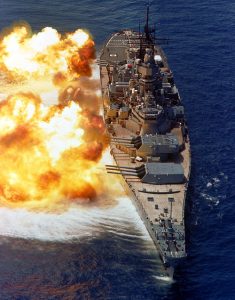
As we have written elsewhere, “heavy” machine guns are essential tools for militaries around the world. While the US-made M2HB was originally intended as an anti-tank weapon, it evolved over time into a kind of highly lethal “Swiss Army Knife“, capable of engaging infantry, light vehicles (and some not-so-light), helicopters and other types of aircraft, while also being able to be fired from those same platforms…But the M2HB, as definitive as it is, is by no means alone on the battlefield.
Around the world, combat forces use a weapon just as capable, and nearly as venerable, and have done so since the end of World War 2, a weapon that has become iconic as the antithesis of the M2…And that is our subject this week.
Origin and Development
The DShK 12.7mm heavy machine gun stands as one of the Soviet Union’s most enduring weapons, remaining in active service more than eight decades after its introduction. Development began in 1929, when the Red Army identified the need for a heavy machine gun comparable to the American M2 Browning. The initial design was finalized by Vasily Degtyaryov in 1931, utilizing the same gas operation system found in his earlier infantry machine guns.
This first iteration, designated the DK (Degtyaryov Krupnokaliberny or “Degtyaryov Large Caliber“), had significant limitations. It relied on a cumbersome 30-round drum magazine and suffered from a disappointingly low rate of fire. Production began in 1933, but only small quantities were manufactured through 1935.
The breakthrough came when designer Georgy Shpagin significantly improved the weapon by replacing the drum feed with a belt-fed system using a rotary-feed cylinder. This redesigned weapon entered production in 1938 as the DShK 1938, with its name deriving from both designers (Degtyaryov-Shpagin Krupnokaliberny). Soviet troops affectionately nicknamed it “Dushka” [https://en.wikipedia.org/wiki/DShK], meaning “dear one” or “sweetie” in Russian.

Technical Specifications and Capabilities
The DShK fires the powerful 12.7×108mm cartridge, a round slightly larger than its American counterpart, the .50 BMG. Operating at a rate of fire of approximately 600 rounds per minute, the weapon boasts an effective range of 2.4 kilometers (1.5 miles) against ground targets. Perhaps more impressively, it can penetrate up to 20mm of armor at ranges up to 500 meters, making it effective against lightly armored vehicles.
The weapon features distinctive “spider web” ring sights designed specifically for anti-aircraft use, highlighting its dual-purpose role as both an anti-vehicle and anti-aircraft weapon. The original DShK weighed approximately 34 kg (75 pounds) for the gun alone, but when mounted on its wheeled carriage with armor shield, the complete system weighed a substantial 157 kg (346 pounds).

During World War II, the Soviets made a critical improvement to the DShK by introducing a simpler, more cost-effective muzzle brake in 1944, patterned after the Polish Wz. 35 anti-tank rifle. This replaced the more complex original design and improved both production efficiency and reliability.
The DShK-M: Post-War Evolution
Following World War II, Soviet engineers further refined the design. In 1946, they introduced the DShK 38/46, more commonly known as the DShKM. This modernized version featured a redesigned feed mechanism that allowed belts to be loaded from either side, a simplified production process using more stamped sheet metal components, and a new disintegrating belt that broke apart in 10-round increments.
These improvements made the weapon more reliable and easier to manufacture at scale. Production of the DShKM continued until 1980, with more than one million units manufactured. The weapon was also produced under license in numerous countries including China and Pakistan (as the Type 54), Pakistan, Iran, Yugoslavia, Romania, Poland, and Czechoslovakia.
Military Applications and Deployment
Throughout its service life, the DShK has been employed in multiple roles. During World War II, the Red Army primarily used it as an anti-aircraft weapon, mounting it on GAZ-AA trucks, IS-2 tanks, ISU-152 self-propelled artillery, and the T-40 amphibious tank. When deployed as an infantry support weapon, it was typically mounted on a two-wheeled trolley with an armor shield.
After the war, the DShK became a standard fixture on Soviet armor. Almost all Soviet-designed tanks prior to the T-64 featured the distinctive DShK mounted on the commander’s cupola, creating an iconic silhouette of Soviet military might.

In the 1970’s, the Soviet military began replacing the DShK with the newer NSV “Utyos” heavy machine gun, which was significantly lighter and more accurate. However, the transition was never complete, and the DShK remained in widespread service.
Contemporary Combat Use
Despite being in current, limited, production only in China, Pakistan and Iran, the DShK continues to see active service in conflicts worldwide. During the Soviet-Afghan War (1979-1989), the weapon played a critical role for both sides. Soviet tanks deployed it as an anti-aircraft weapon, while Mujahideen fighters used captured DShKs and Chinese Type 54 copies to devastating effect against Soviet helicopters from mountainous positions.

The weapon featured prominently in the Vietnam War, where it was smuggled through Laos, Vietnam, and Cambodia for use by Communist forces. Military historians estimate that a significant portion of the 7,500 American helicopters and fixed-wing aircraft lost during the conflict were brought down by DShK fire.
In more recent conflicts, the DShK has become a fixture of what military analysts call “technicals” — pickup trucks with heavy weapons mounted in the bed. These mobile weapons platforms have featured prominently in civil wars in Somalia, Libya, Syria, and other conflicts across Africa and the Middle East.

In the ongoing Russia-Ukraine conflict, Ukrainian forces have found innovative new uses for the DShK. Notably, Ukrainian troops have successfully employed DShKs fitted with searchlights to shoot down Iranian-made Shahed-136 drones. This approach has proven both cost-effective and reliable compared to using expensive MANPADS (Man-Portable Air Defense Systems).
Ukrainian forces have also modified the DShK for infantry use by adding features like bipods, a shoulder stock, a pistol grip, and Picatinny rails for mounting modern optics. The resulting hybrid weapon functions as a heavy anti-materiel rifle with good accuracy out to 800 meters.
Legacy
The DShK holds the distinction of being, alongside the American M2 Browning, one of only two .50 caliber machine guns designed before World War II that remain in active service today. This remarkable longevity speaks to the fundamental soundness of its design and its versatility across different combat roles.
While newer weapons like the NSV and Kord have been developed to replace it, the massive quantities of DShKs produced and distributed worldwide ensure that this Soviet heavyweight will continue to appear on battlefields for decades to come — a testament to its reliability, effectiveness, and adaptability to evolving warfare requirements.
Like many weapons we discuss here, “obsolescent” does not necessarily equal “obsolete” – sometimes, “good enough” soundly trumps “newest”, something important to keep in mind.








